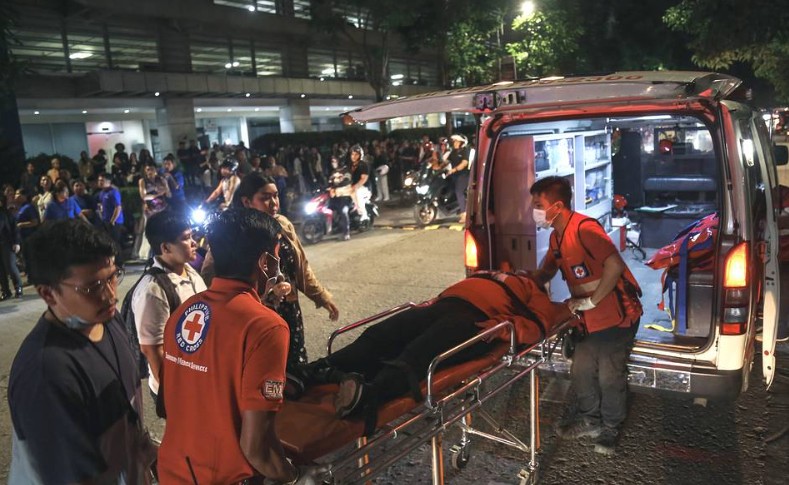Powerful Earthquake Strikes Southern Philippines, Killing Five and Sparking Tsunami Evacuations
A strong 7.4- magnitude earthquake rattled the southern Philippines on Friday morning, leaving at least five people dead, driving landslides, damaging seminaries and hospitals, and issuing temporary refuge warnings for near littoral communities.
President Ferdinand Marcos Jr., defying yet another natural disaster after recent deadly storms and earthquakes, verified that authorities were assessing the extent of the damage.
“Rescue teams and relief operations are being prepared and will be deployed when it is safe to do so,” he said.
The Philippine Institute of Volcanology and Seismology reported the earthquake began from the Philippine fosse, centred roughly 43 kilometres east of Manay city in Davao Oriental province at a depth of 23 kilometres. Officers advised of implicit foreshocks and structural damage.
7.6 Magnitude Earthquake Hits Offshore Davao Oriental, Triggers Tsunami Alerts
Watch the scary visuals from Mapua School in Davao City, Philippines, during the earlier magnitude 7.6 earthquake. #earthquake #Tsunami pic.twitter.com/4Qe191ZZpy
— Sumit (@SumitHansd) October 10, 2025
At least five losses were recorded. Two cases suffered fatal heart attacks at a sanitarium during the earthquake, and an original occupant in Mati megacity was struck by falling debris, according to Ednar Dayanghirang, indigenous director of the Office of Civil Defense.
Two further townies failed, and several others sustained injuries, in a landslide touched off by the earthquake in a remote gold-mining community in Pantukan city, Davao de Oro fiefdom. Army labor force and mercenary levies supported with deliverances.
Several structures, including the corridor of Davao International Airport, sustained cracks, though breakouts were innocent, reported Bernardo Rafaelito Alejandro IV, deputy director of the Office of Civil Defense.
“I was driving my car when it suddenly swayed, and I saw power lines swaying wildly. People darted out of houses and buildings as the ground shook and electricity came off,” Jun Saavedra, disaster mitigation officer of Governor Generoso town, told The Associated Press.
“We’ve had earthquakes in the past, but this was the strongest,” he added.
Several structures, including a high school, suffered damage. Around 50 scholars were treated for bruises, dizziness, and fainting.
seminaries in Davao megacity, home to 5.4 million people and located roughly 250 kilometres from the epicentre, were vacated. Classes across all situations in nearby municipalities were suspended as a precaution.
The Pacific Tsunami Warning Center in Honolulu originally issued a warning after small swells were detected on Philippine and Indonesian beachfronts.
The alert was lifted two hours later after no major swells were observed. Principal government seismologist Teresito Bacolcol verified that the trouble had passed.
In Indonesia, minor riffle swells were reported in North Sulawesi’s Talaud islets sections, ranging from 3.5 to 17 centimetres.
The Philippines continues to recover from a 6.9-magnitude earthquake on 30 September in Cebu province, which killed at least 74 people and displaced thousands, particularly in Bogo megacity.
The archipelago is prone to around 20 typhoons annually, adding strain to disaster response sweats.
Meanwhile, a separate earthquake with a primary magnitude of 6.0 struck off the seacoast of Papua New Guinea, centred in the Bismarck Sea 414 kilometres northeast of Lae. No damage was reported there, according to the original police.






